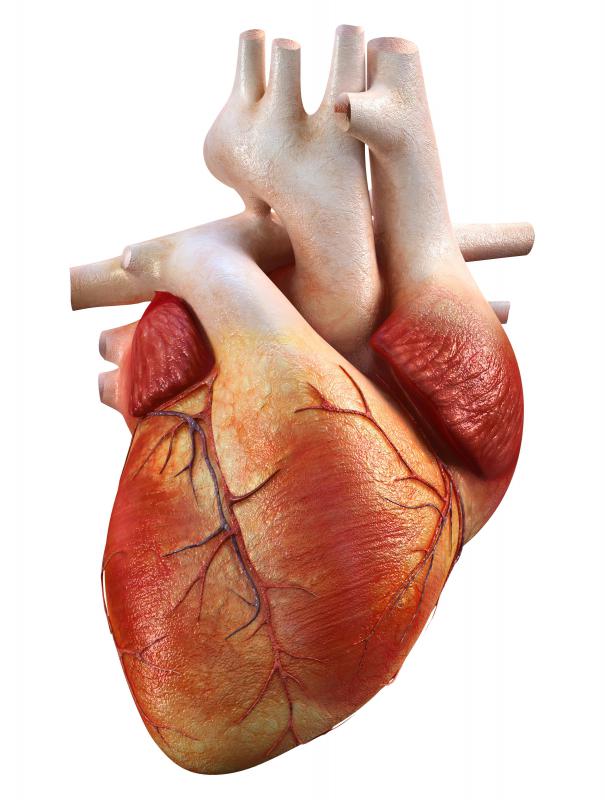At TheHealthBoard, we're committed to delivering accurate, trustworthy information. Our expert-authored content is rigorously fact-checked and sourced from credible authorities. Discover how we uphold the highest standards in providing you with reliable knowledge.
What is the Mitral Valve?
The mitral valve is one of the two atrioventricular valves that are located inside the heart between the atria and the ventricles. On the left side of the heart is the mitral or left atrioventricular valve and on the right side the tricuspid valve is the conduit between right atrium and right ventricle. The left-sided valve has two leaflets, unlike the tricuspid which has three, that open when the heart contracts to allow blood to pass through from the left atria into the left ventricle. In the normal heart, these leaflets close and seal in between contractions so blood passage is restricted.
In most cases, people will never have to think about whether they have a functioning mitral valve. However, some people may be born with a number of conditions that impair or disrupt function of the mitral valve. Alternately, they may get diseases that can affect this important conduit, and it is valuable to reflect on its importance.

The human heart may beat about 3 billion times in a lifetime, which means this valve must also open and close that many times. As hearts age, special cords that help the valves operate will occasionally stretch or become less functional and this may be significant enough to cause congestive heart failure. Many people will never encounter this, and should thank their hearts for the extraordinary function of such a tiny organic device.

Sometimes the valve is functionally insufficient at birth. It may not have formed properly, and it may or may not be present with other heart defects. When people have an abnormally small left atrium or left ventricle, they may have a mitral valve that doesn’t work. The valve might be called stenotic, and be too small to permit enough passage of blood from atrium to ventricle with each heart contraction. This may require surgery immediately or soon after a child is born to either repair or replace the valve, or the stenosis may be mild and doctors can take a wait and see approach.
One of the most common causes of mitral stenosis in the past was through contraction of rheumatic fever. This is fortunately now rare and generally not seen often. However, it still can affect many in countries where medicine is not advanced.

Another common disorder of the mitral valve is prolapse. This occurs when the leaflets on the valve bulge into the atria while the heart is contracting. When prolapse is present the valve may not close sufficiently in between contractions, and blood can leak back from ventricle into the atrium, called regurgitation. A tiny amount of regurgitation may not affect heart function greatly, but massive regurgitation creates huge problems and often leads to heart failure.
Mitral valve prolapse doesn’t have to cause regurgitation, and again, it may be a congenital defect or one caused by aging or diseases like rheumatic fever or bacterial endocarditis. It may not require treatment, and some people are unaware they have the condition, though it may cause some heart murmurs that are fairly distinct. When prolapse is significant, some people will require surgery and this will usually mean either replacing the valve or attempting to correct the valve with surgical repair.
There are some difficulties with valve replacement. Valves from tissue usually come from pig or cow sources and they may wear out within a few years. Mechanical valves are frequently preferred because they are longer lasting. However, most people who have a mechanical valve must be on lifelong daily doses of warfarin (Coumadin®) to prevent increased risk for stroke. Due to the problems with valve replacement, surgeons often opt to repair the valve when they can to avoid these issues.
AS FEATURED ON:
AS FEATURED ON:













Discuss this Article
Post your comments